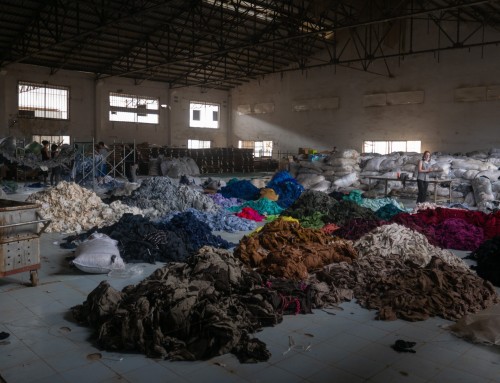In a world where fashion trends change in the blink of an eye, the traditional fast fashion model has dominated the industry for years, driving rapid production, consumption, and disposal of clothing. However, a new contender has emerged in the form of digital fashion, which promises to revolutionise the way we perceive and interact with clothing.
Digital fashion has gained popularity as a form of self-expression, creativity, and sustainability within the fashion industry. But what exactly is it, and can it bring potential benefits to the sustainable fashion industry? In this article, we’ll delve deeper into the potential benefits, and limitations of digital fashion.
Firstly just what is digital fashion?
Digital fashion refers to clothing and accessories that exist solely in the virtual or digital space. It involves the creation of fashion designs using software such computer-generated imagery (CGI), 3D modelling, and other digital technologies. These digital garments can be worn and showcased in virtual environments, social media, online gaming, virtual reality (VR), and augmented reality (AR) platforms.
As the name suggests, in digital fashion, there is no physical production of clothing. Instead, fashion designers create elaborate and imaginative designs with software, and these designs are not constrained by the limitations of physical materials. Digital fashion blurs the line between the real and virtual worlds, offering a new dimension to fashion creativity and expression.
People can experience digital fashion by “trying on” these virtual garments in various virtual spaces. They can take pictures or videos of themselves wearing the digital outfits, which can then be shared on social media or integrated into virtual environments.
Digital fashion has exciting potential for consumers and fashion brands alike, challenging the traditional notions of fashion consumption, allowing users to explore unique styles and experiment with looks without the environmental impact of physical garment production. As sustainability becomes an increasing concern, digital fashion offers a glimpse into a more eco-friendly and innovative future for the fashion industry.
Is digital fashion important in the fashion industry?
In the ever-evolving landscape of fashion and technology, the significance of digital fashion cannot be overstated. As we navigate a world increasingly interconnected through digital platforms, the desire for a virtual identity and ownership has emerged as a powerful force. This is particularly true for digitally native generations, who crave opportunities to express themselves in the virtual realm just as authentically as they do in the physical world.
There are a number of ways digital fashion is important across the fashion industry. These include:
- Empowering Virtual Identity: Digital fashion provides a medium for individuals to curate their virtual identity, explore unique styles, and experiment with avant-garde looks. This could be particularly useful for sustainable brands, allowing consumers to share their eco-friendly approaches to fashion across a wider network.
- Increased creative opportunities: For designers, digital fashion opens a world of creative possibility. Without the restraint of physical materials, they can create designs from innovative, sustainable materials. This can foster innovation within a sustainable space, and will likely drive the industry forward.
- Increased environmental sustainability: Digital fashion offers increased sustainability. By eliminating physical production, transportation, and material waste, digital garments can help reduce the fashion industry’s carbon footprint, aligning with the global push for eco-conscious practices.
- Mindful consumption: Virtual fashion promotes a shift towards mindful consumption. With digital outfits, users can experience the thrill of new styles without contributing to excessive material consumption or fast fashion’s negative consequences. This can help to support a culture of conscious choices and a focus on quality over quantity.
- Versatility and Adaptability: Digital fashion is adaptable to various digital platforms, including social media, virtual reality, and gaming. This versatility allows designers to reach broader audiences and engage with consumers in unique and interactive ways, enhancing brand exposure and fostering a deeper connection with the audience. This can be particularly valuable to promote messages of sustainability across platforms.
How can digital fashion support sustainability across the fashion industry?
A key factor contributing to the growing popularity of digital fashion is its potential to significantly reduce the environmental footprint associated with traditional fast fashion. One of the most notable advantages of digital clothing is that it exists solely in the virtual realm, eliminating the need for physical production, transportation, and associated carbon emissions.
Below are some key ways that digital fashion can specifically support the fashion industry in becoming more sustainable.
- Reduced Material Waste: The design and sampling process of digital fashion also play a crucial role in sustainability. When designers create and visualize their garments digitally, it leads to marked reductions in resource use and textile waste. Digital fashion eliminates the need for physical garment production, subsequently reducing the demand for raw materials and minimising material waste generated during the design and manufacturing process, and across supply chains.
- Lower Carbon Footprint: This reduced waste, in combination with zero physical production and transportation means that digital fashion significantly reduces carbon emissions associated with traditional fashion supply chains.
- Virtual ‘try ons’ and fittings: Virtual try-on technology allows consumers to see how a garment would look on them without physically trying it on. This reduces the need for multiple shipments and returns, which helps cut down on transportation-related emissions. Shopping returns are a huge issue for online retailers, both in terms of financial cost and sustainability impact, so this offers interesting potential.
- Sustainable Marketing and Promotion: Digital fashion campaigns and promotions can be conducted through eco-friendly online channels, reducing the need for physical marketing materials and printed media. This can help to increase awareness amongst consumers for making more sustainable fashion decisions, as well as cultivate supportive sustainable online communities, often important to consumers. This exposure can help foster a shift towards supporting eco-conscious brands and practices.
- Encourages Mindful Consumption: Digital fashion fosters a shift towards mindful consumption, which is a significant step towards promoting sustainability in the fashion industry. Unlike the traditional fast fashion model that encourages excessive buying and impulsive purchasing, digital fashion allows consumers to explore a wide array of styles and trends without the need for physical ownership. By providing virtual fashion experiences, users can try out different looks and experiment with their style choices without contributing to overconsumption and subsequent waste generation. The virtual nature of digital fashion also allows consumers to break away from the “buy-and-discard” mentality, leading to a more intentional and thoughtful approach to fashion. This mindful consumption not only reduces the demand for physical products, reducing environmental impact accordingly.
- Complements Physical Fashion: Interestingly, digital fashion can coexist with physical fashion, offering a hybrid approach that combines sustainability with real-world clothing options. In addition, digital designs can be iterated and perfected without the need for physical prototypes, significantly reducing material waste and resource consumption in the process of creating physical fashion.
While digital fashion alone cannot solve all the challenges faced by the fashion industry, it serves as a potential catalyst for change. By promoting innovation, reducing waste, and encouraging conscious consumption, digital fashion contributes to the development of a more sustainable and eco-friendly future for the fashion industry.
Balancing Advances in Digital Fashion with Real World Needs
While the concept of digital fashion holds interesting potential to increase sustainability in the industry, there is a need to strike a balance between innovation and real-world applications. Digital fashion cannot replace physical clothing entirely, as the tactile experience and functionality of garments remain essential to consumers. However, digital fashion offers a unique space for creative exploration, self-expression, and experimentation without the environmental consequences of overconsumption and waste. By incorporating both digital and physical fashion elements, the industry can move towards a more sustainable future without compromising on style or functionality.
What are the potential drawbacks of digital fashion?
While digital fashion presents numerous benefits and opportunities, it also comes with some downsides and challenges. Here are some of the key downsides of digital fashion:
- Lack of Tangibility: One of the main downsides of digital fashion is the absence of a physical, tangible product. For many consumers, the tactile experience of trying on and wearing clothing is an essential part of the fashion experience.
- Limited Real-World Use: While digital fashion allows for creative expression and experimentation in virtual environments, its practical application in the real world is realistically limited. This may mean more scope for designers, virtual try ons and experimentation.
- Dependency on Technology: Digital fashion is reliant on technology, such as computers, smartphones, and virtual reality platforms. This reliance poses challenges for people with limited access to technology or those who may not be tech-savvy. Additionally, the constant evolution of technology may lead to compatibility issues with older devices or software.
- Sustainability Concerns: While digital fashion has the potential to reduce the environmental impact of physical garment production, it is not entirely free from sustainability concerns itself. For example, the creation and maintenance of digital assets, such as 3D models and virtual environments, still require energy and resources.
- Exclusivity vs. Accessibility: Digital fashion can be exclusive to those who have access to virtual platforms or who can afford high-quality digital experiences. This may create a divide between those who can participate in the digital fashion world and those who cannot, potentially excluding certain groups from the evolving, more sustainable fashion landscape.
- Consumer Behaviour Shifts: While digital fashion has the potential to promote a more sustainable approach, it may also influence consumer behaviour negatively; promoting a culture of disposable and ephemeral fashion experiences. The rapid pace of digital fashion updates may contribute to a mentality of quick and constant consumption, similar to the fast fashion model.
To wrap up
In conclusion, digital fashion offers an exciting way to create a more sustainable fashion industry. Beyond being a novel trend, it helps to address the desire for digital identity and ownership, providing a creative space for self-expression, sustainable practices, and embracing diversity, all with the potential to reduce waste and carbon footprint.
Digital fashion is at an exciting, ‘potential’ stage, and it will be important to strike a balance between creativity, sustainability, and real-world usability. But, by embracing this digital revolution, the industry can inspire positive change and pave the way for a more vibrant, accessible, and responsible future of fashion.
Textile Consult operates worldwide, consulting on a variety of management, training and sustainability issues within the textile industry. Contact us today to find out how we’ll work with you to find effective, sustainable solutions for your company.


